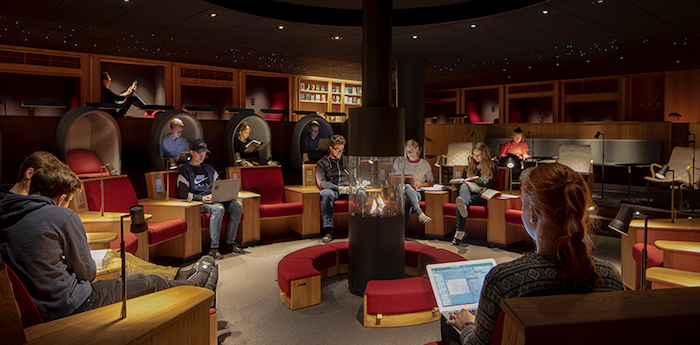
The children are our future. Indoor environments promoting their health and learning should be in focus. Which perspective do we have when we design the indoor environments such as child care centers, schools and universities?

Daylight is essential for us human beings. So as for our young citizens. We, companies, organizations and society, are today discussing how our workplaces look like, what is promoting workplace wellness and increase the productivity and wellbeing in these environments. We are aware of that, for example daylight, good lighting, good air quality, natural elements are enhancing the workplace environment. Just as important, it is to discuss what is enhancing the children’s educational environments and how they are designed today.
The fact is, students learn better in well day lit classroom, without the distraction of glare. In optimal conditions, a study (Heschong Mahone Group. Daylighting in Schools 1999) found test score improvements as high as 26%. It was determined that students with the most daylighting in their classrooms progressed 20% faster on math tests and 26% on reading tests in one year than those with the least.
Today more than half of the world’s population lives in cities and if the urbanization and people growth continues in the same way, it is expected that 2,5 billion more people lives in cities in year 2050. The urbanization creates today a huge interest for densification of the cities and at many places in the world this means that the daylight will be a challenge. Deep buildings, dens block structure, increased demands on energy efficiency and older buildings to be adapted to new types of uses means that more and more people risk to end up in living and working environments with insufficient daylight. Densification and urbanization also has many benefits and is often talked about as a possible solution to the challenges of our time. For example, sustainable and efficient transports are facilitated. However, one of the greatest challenges today is to ensure that urbanization is not done at the expense of human health and good working, living and learning environments.
When we design child care centers, schools and universities, do we have the children and the young people in mind, both regarding the physical layout and the light design? The Swedish Architect and the Swedish Light Prize winner (Svenska ljuspriset) Jonas Kjellander, talks about “lighting is the most important tool in designing the physical environment”. Kjellander, together with collogues from Sweco, a Swedish Architectural Firm, got the award for the project “Ekonomikum” at the well reputed Uppsala University in Sweden.
Image curtesy: https://www.sweco.se/nyheter/press/_2019/ljusdesign/

The jury stated (translated from Swedish) “The result shows a solid knowledge of the light’s interaction with color, shape and material. The project has been carried out with tremendous passion and expertise on study environments and the belief in the young person and her legitimate demands for dignity. The ergonomic and innovative light treatment integrates both function, experience and atmosphere.”
The thing is, if we design from the perspective of children, it will always be good for both the children and the adults, but if we design from the perspective of adults, we could assume that it not always will be beneficial for the children.
Designing learning environments from a children’s perspective is also smart from a social perspective; when we invest in our children and create a good childhood environment, it will affect them in terms of performance and it will also affect them as adults. So we all need to be smart and design learning environments with the kids in mind.

SUNLIGHT DEEP INTO BUILDINGS AND FAR AWAY FROM WINDOWS
With Parans’ solution you are able to create sunlight filled spaces in every building.
Thin, flexible fiber optic cables lead the sunlight far from windows and deep into the building where the sunlight from windows cannot reach. As common as it is to have windows along the facade and that way lead the natural light inside, as common it could be to lead sunlight via a Parans system deep into the building – to every room, on every floor.
Create amazing light experiences for every generation!
Want to know more about the value of the Parans system? Download our Light Guide.